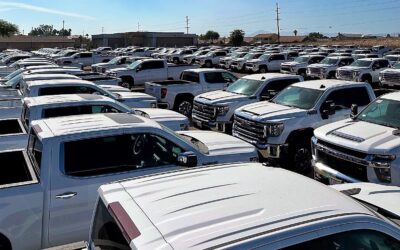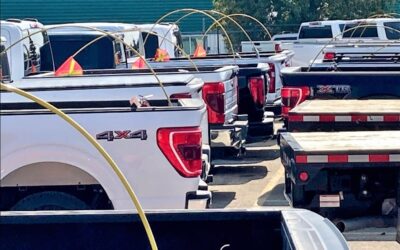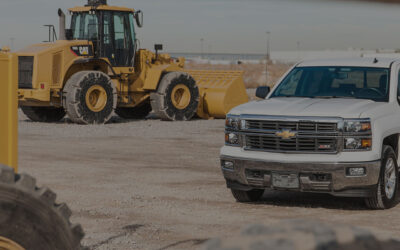3 Top Fleet Management Costs You Should Be Monitoring
As fleet companies try to meet customer expectations, they need to keep fleet costs in mind. So how much is a fleet? There are many costs that demand continual tracking, analysis, and assessment, such as fuel, vehicle acquisition, driver training, and preventative maintenance.
However, some of these expenses are certainly more critical as monitoring and reducing them is a part of proper fleet management. They also act as the most viable metrics for a fleet company to make data-driven strategic decisions. If you know your operating costs and have metrics that can effectively measure and monitor them, you can develop actionable strategies for optimal success.
So, without any ado, let’s take a look at the fleet management costs that have the most impact on the performance of your business and how you can manage them!
Fuel
Fuel is a primary work truck fleet expense due to the fluctuations and dramatic rises in fuel prices. It’s why you need to consider your fleet’s overall fuel expense when budgeting. Here are some ways in which you can decrease your fuel expense:
Track your vehicle’s efficiency
Summit Fleet offers detailed vehicle tracking via our Customer Portal and Driver’s Scorecard features. Keep track of your fleet’s location, gas mileage, driver performance, and maintenance reminders with these convenient, powerful features.
Take part in a fuel card program
Enrolling in a fuel card program will ensure that the right amount of fuel is used. It will help you prevent unauthorized fuel expenses that surpass the predefined amount for each truck’s operations. This strategy will work wonders when you invest in top-quality trucks with fuel-efficient components. After all, fuel costs for heavy-duty truck fleets represent more than half the total cost of operation. So, you need to spec fleet vehicles thoroughly and ensure optimal fuel economy before investing in them.
Fleet Maintenance
Operational expense, such as fleet maintenance, is also one of the most significant fleet costs; it can take up a massive chunk of a fleet’s overall budget. It’s why you need to address maintenance and repair costs as part of the overall budgeting strategy. Otherwise, you might have to deal with increased costs and downtime, as well as loss of productivity.
Since fleet repair-related costs affect its efficiency, you must prioritize preventative maintenance. It will reduce the likelihood of frequent visits to the shop and prevent your vehicles from breaking down or undergoing costly repairs. Your maintenance costs will heavily depend on the age and use of your fleet vehicles. For instance, if your vehicles are often used for off-road assignments, you will need more active preventative care.
For successful preventative maintenance, you will need to create a strict schedule followed by all employees, including drivers and technicians. It will help you keep track of the maintenance costs of each vehicle, making it easier to monitor the health of each one.
It matters because if you hold on to your trucks for too long, predictable maintenance needs will turn into unpredictable, costly maintenance and repairs, such as complete engine overhaul and transmission replacement. It’s why you must cycle out your trucks before they start costing you more than their worth.
Acquisition & Upfitting
Another significant fleet management cost comes in the form of vehicle acquisition and aftermarket additions. These costs can run quite high, depending on the vehicle you buy and the upfitting you choose to do. You can create cost-saving opportunities by conducting thorough research and understanding the specs and features of new vehicles to make informed smart decisions.
For instance, the vehicles you choose should have the optimal capacity you need and must be equipped to handle your specific job. Similarly, you need to upfit your vehicles with equipment that promotes driver security and enhances productivity.
The size of the truck matters a lot because if the truck is too small, it will not be able to bear the weight it’s supposed to carry, resulting in higher and more frequent maintenance costs while reducing the lifetime of the truck. On the other hand, if the truck is too large for the required jobs, you will face significant acquisition costs and avoidable fuel costs.
Here are some cost-effective vehicle acquisition tips:
- Acquire trucks from manufacturers via a fleet rental provider instead of buying from retailers.
- Keep the manufacturers’ production schedules in mind before placing your order to ensure timely delivery.
- Set up a discount program with the manufacturer if possible.
Optimal Fleet Utilization
One of the best ways to improve fleet efficiency and lower the cost of ownership is to find the right number of suitable vehicles via optimal fleet utilization. Just like you need proper staffing, you also need to ensure the availability of enough vehicles to capture new market opportunities while keeping track of your job requirements and vehicle expenditure. After all, you don’t want to invest in vehicles that will not be utilized and will sit idle, creating unnecessary expenses.
Finding the right balance will help you remain competitive in your market. It’s why you need to figure out your fleet’s ideal number of the right type of vehicles to meet your business demands. It might also include getting rentals to fulfill additional transportation needs during peak work seasons. If you follow this approach, you can keep your fleet costs in line and maximize the time that each vehicle spends on the road.
Additionally, you should talk to your drivers about daily vehicle use to pinpoint the most necessary equipment add-on solutions to keep your upfitting costs from skyrocketing. Whether your drivers require service bodies, toolboxes, ladder racks, telematics, or more, upfitting your trucks correctly can protect your assets while making it easier and safer for your drivers to work.
You should also factor in upfitting costs into your delivery schedule from the get-to as part of your acquisition strategy. It will help you during peak seasons and enable you to prepare for sudden auto part shortages and labor challenges. It will also enable you to perform an appropriate cost analysis.
Other Overlooked Fleet Costs
Here are some other fleet costs that are often sidelined:
- Insurance
- Accidents and injuries
- Driver wages and benefits
- Overhead costs
- Vehicle depreciation
- Driver turnover
- Engine idle time
- Timely vehicle cycling
- Downtime
- Permits and compliance
The truth is that a fleet company has numerous costs that it needs to track for a well-maintained strategy for market competitiveness. However, monitoring and reducing the three significant fleet management costs mentioned above can certainly help you take your fleet business to the next level while keeping your budget in line. Summit Fleet offers truck fleet rentals that can help you lower inventory and maintenance costs while giving you even more flexibility and scalability to help you get your jobs done. Contact us today to get your rate.






